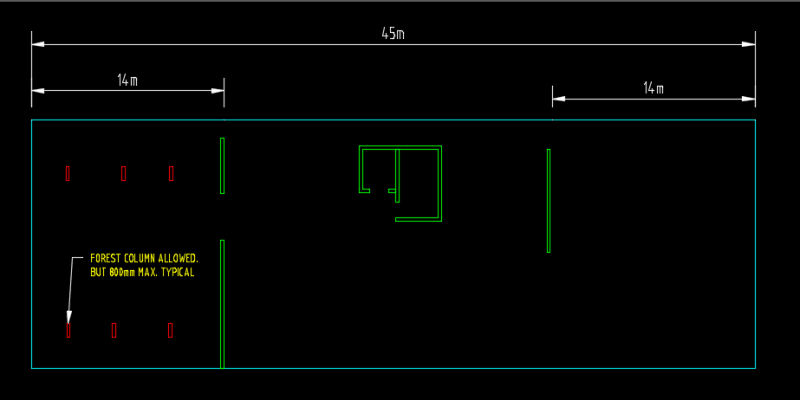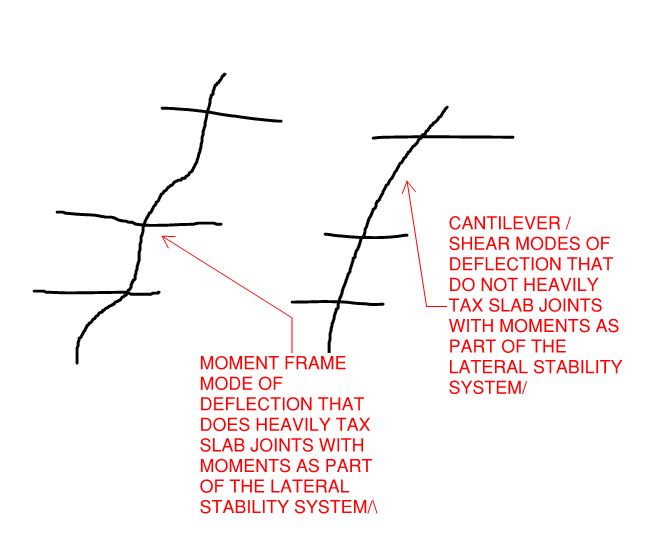FreshMan2020
Structural
- May 7, 2020
- 24
I know that the column-flat slab is not considered a lateral system normally but wall-flat slab can. So I am wondering how long the wall need to be so 'wall'-flat slab can be considered a reasonable lateral resisting system generally speaking? Below is the structure I am working on. On the ground floor it is a retail so the architect doesn't want walls, which is fair. But as the nearest shear wall is around 14 meters away I am not comfortable with that. The architect allows me to put some columns in with 800mm max depth. I am not sure with this depth whether it can be considered lateral resisting system? I understand that if I do it in FEA, as long as I put a frame with rigid connection it will have lateral stiffness that attracts lateral loads and thus will be lateral resisting. But I also understand that in real world, column-flat slab connection is not reliable for lateral resisting. So normally how long a 'wall' should be to be considered lateral resisting system? Another thing worth noting is the first floor will transfer slab, with shear walls above these forest columns. What do you think about this structure? Do I have to put shear walls in retail area within 14 meters on both ends ? It is a 7-storey building.



